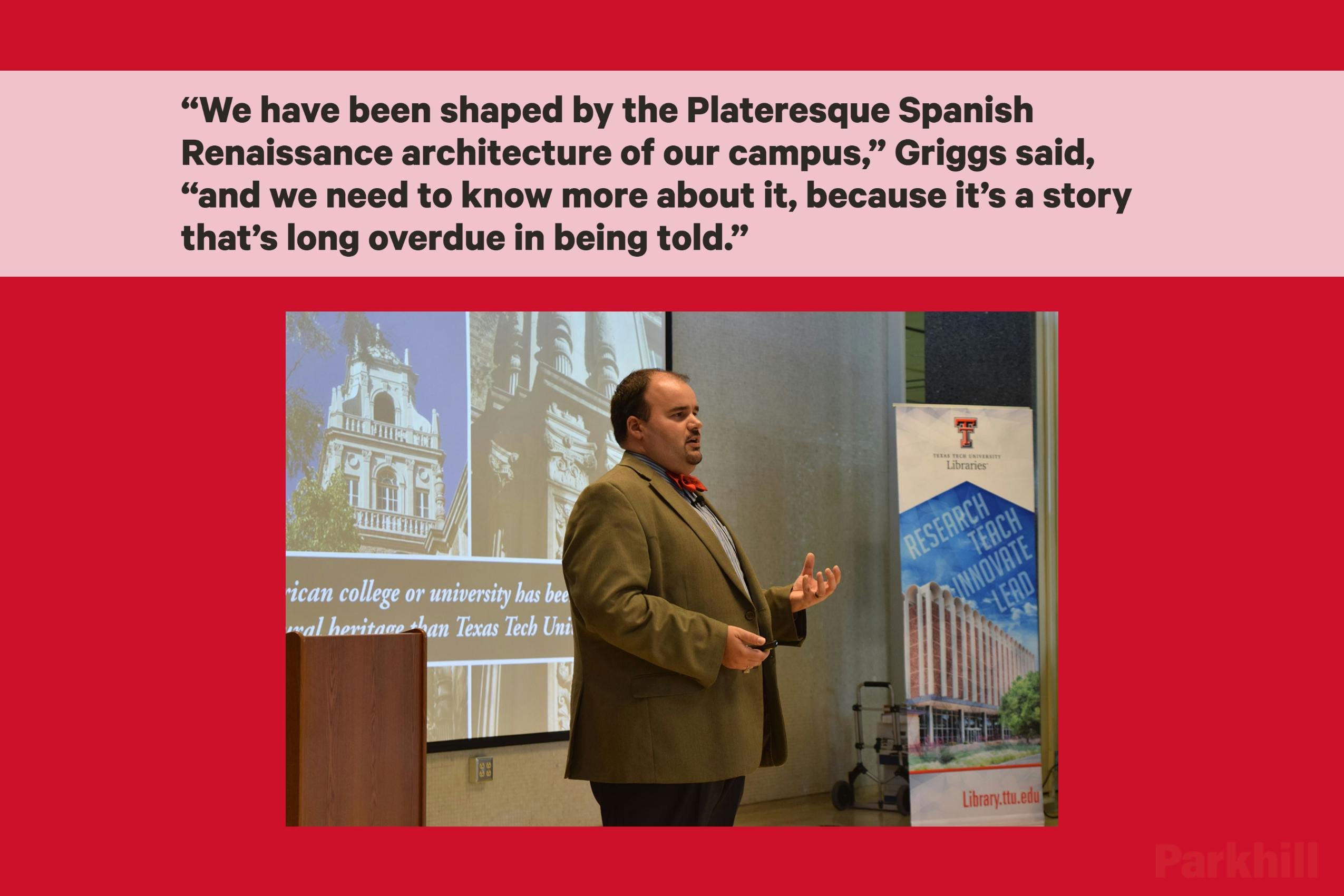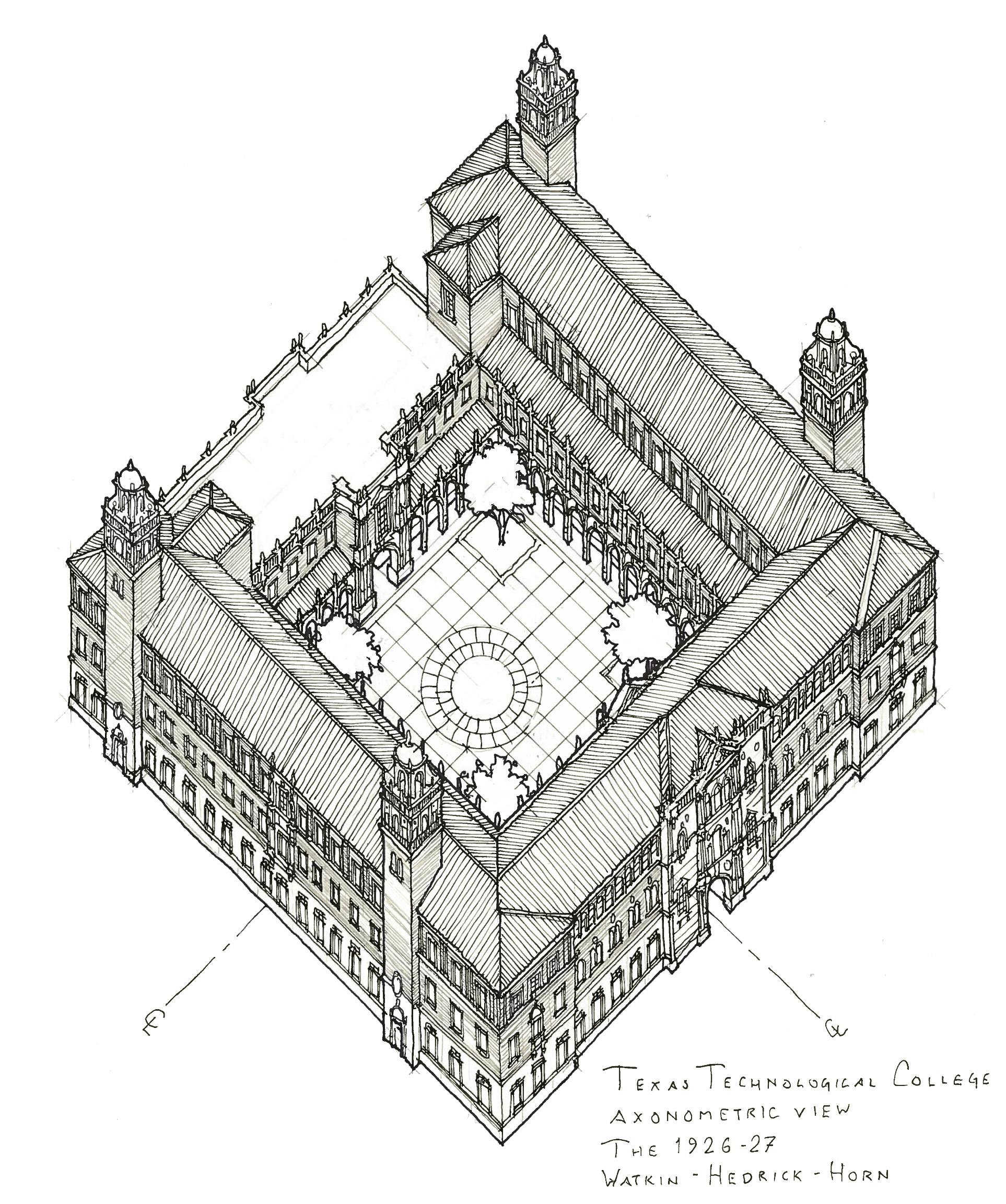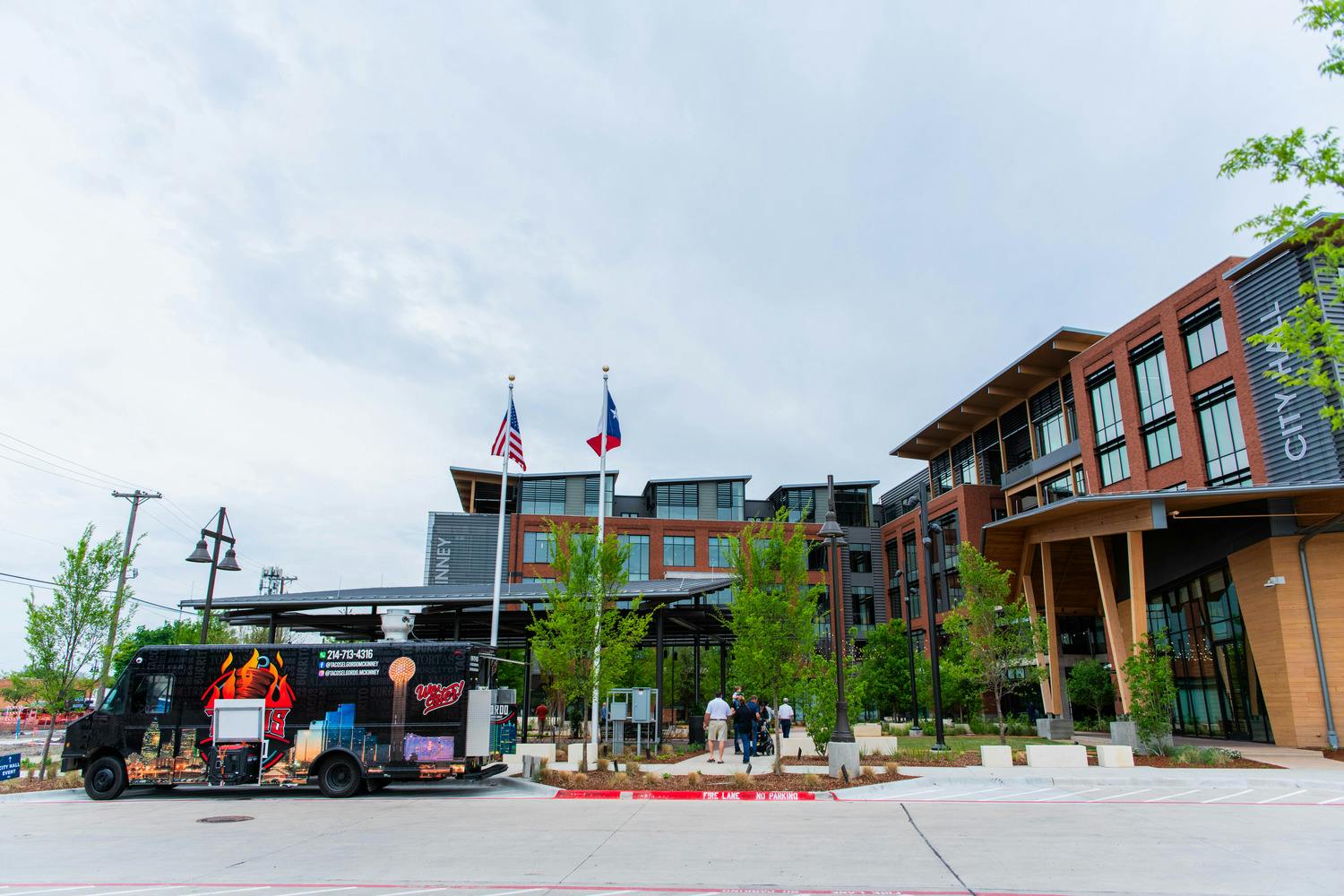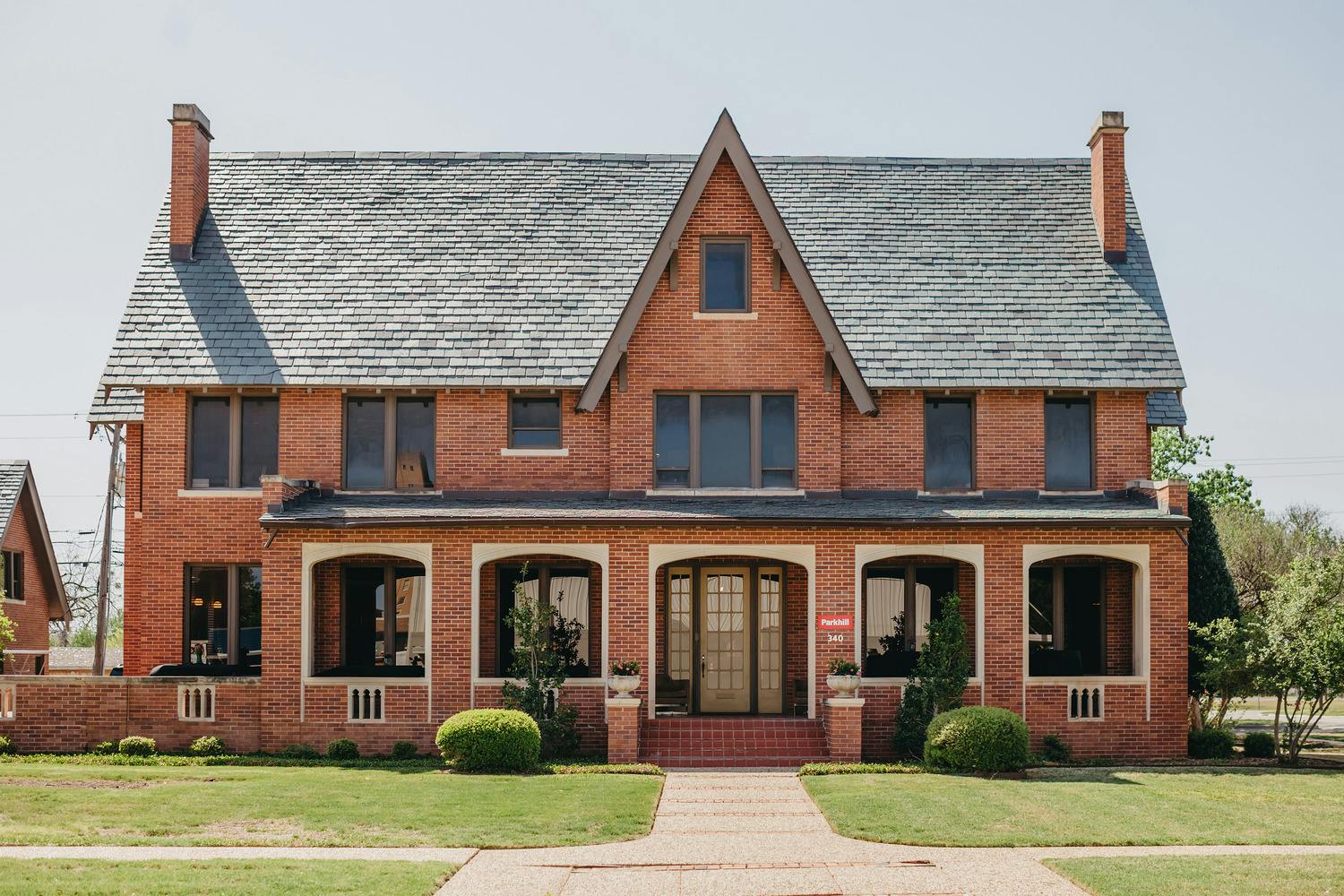Parkhill’s Brian Griggs Talks About Texas Tech Architecture History
Category: Architecture
Written By: Nicole McBride
Date: December 20, 2016

“History is not about names and dates, and places and things. It’s about human beings. History is about drama. It’s about love and hate and tragedy and triumph and these human moments that help to bring stories to life.”
Since 2009, Parkhill’s Brian Griggs, AIA, has been designing a project unique from his typical skill set as an architect. Griggs’ research, writing, and creation of architectural drawings will be published by the Texas Tech University Press in a book about the architectural heritage of Texas Tech University. As a Tech alumnus, he said he expects the book to instill a greater sense of pride in Tech grads for their alma mater.
At the time of Tech’s establishment in 1923, the site was an empty prairie. When the school opened as Texas Technical College on Oct. 1, 1925, the story of Tech’s architectural history was just beginning. Noted architects of the day – William Ward Watkin and Wyatt C. Hedrick – through a chain of unique events would turn to the Castilian and Andalusian styles of the Spanish Renaissance.
“Before we had victory bells, before we had the Masked Rider, before we had a football team or thousands of square feet or umpteen thousand students, we had architecture,” Griggs said.
Looking for important components of Tech’s architecture history can be a painful process, Griggs said. He had to search through stacks of Life magazines to find an advertisement that changed the fate of Tech’s architecture history. This whiskey advertisement featured architect Wyatt C. Hedrick who designed the dairy barn and silo still standing on the Lubbock campus today.
 Because of the prevailing teetotaling attitude espoused in the postwar culture of West Texas, both Baylor and Texas Tech would quietly fire Hedrick – ironically a man who rarely drank – in 1951 for this image in a national magazine.
Because of the prevailing teetotaling attitude espoused in the postwar culture of West Texas, both Baylor and Texas Tech would quietly fire Hedrick – ironically a man who rarely drank – in 1951 for this image in a national magazine.
“It gets a little monotonous,” Griggs said. “But when you find some nugget in a stack of papers then you’re suddenly like ‘Oh wow, I didn’t know that.’”
With the manuscript due to the Texas Tech Press in late March 2017, Griggs said that the release of the book is tentative but that he is hoping it will be available in 2018.
During a presentation in June with the Texas Tech University Friends of the Library, he said the original master plan for Tech in 1924 by William Ward Watkin was for a population of 6,000 students at a cost of approximately $7 million. Jumping forward to today, over the next 10 years alone, $1.4 billion is the expected spending for Facilities Planning and Construction. At the Lubbock campus alone, there is a population of more than 35,000 students. The continued use of Plateresque Spanish Renaissance architecture as the Tech system grows is a testament to the university being formed by this history.
“We have been shaped by the Plateresque Spanish Renaissance architecture of our campus,” Griggs said, “and we need to know more about it because it’s a story that’s long overdue in being told.”




